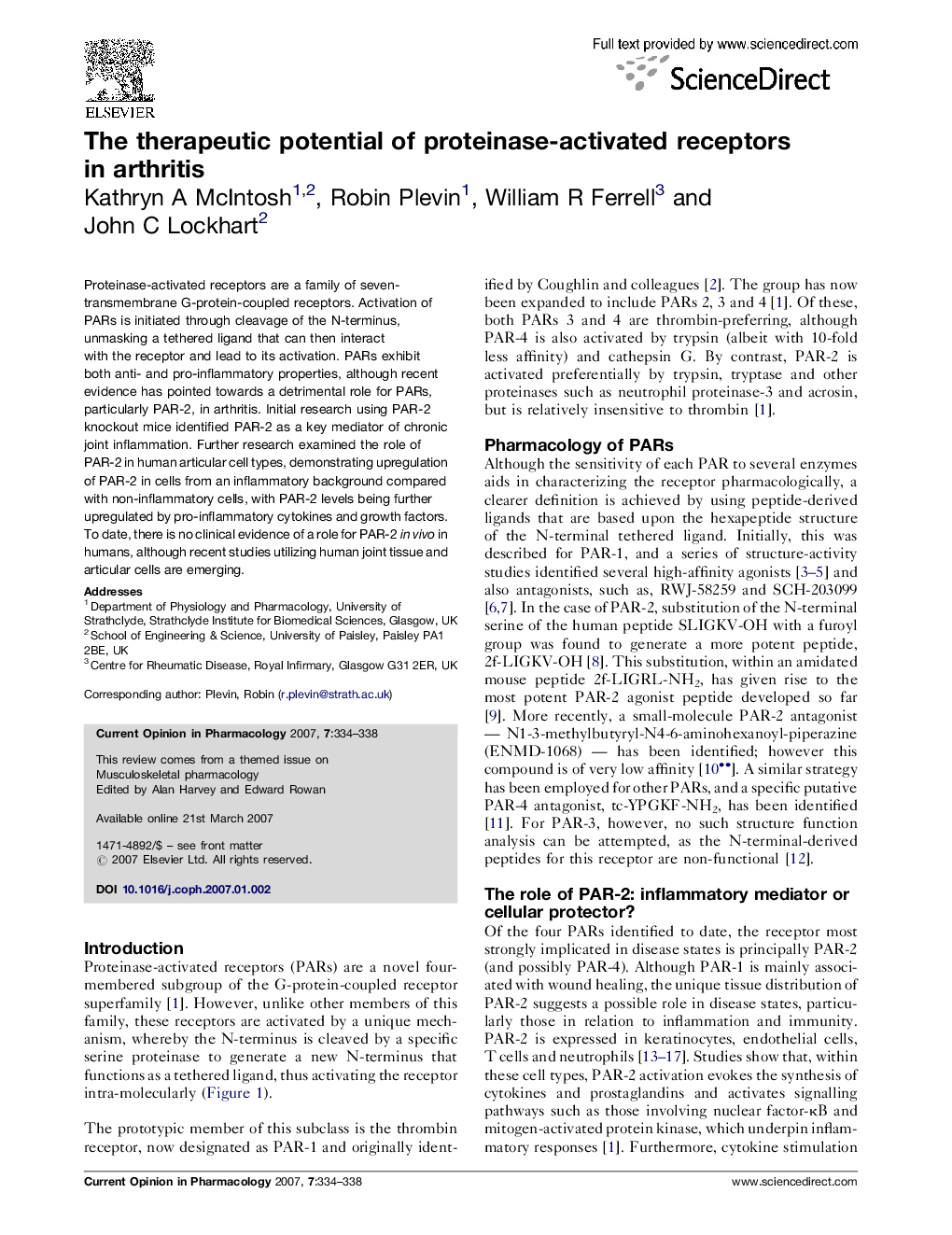| کد مقاله | کد نشریه | سال انتشار | مقاله انگلیسی | نسخه تمام متن |
|---|---|---|---|---|
| 2530606 | 1120463 | 2007 | 5 صفحه PDF | دانلود رایگان |

Proteinase-activated receptors are a family of seven-transmembrane G-protein-coupled receptors. Activation of PARs is initiated through cleavage of the N-terminus, unmasking a tethered ligand that can then interact with the receptor and lead to its activation. PARs exhibit both anti- and pro-inflammatory properties, although recent evidence has pointed towards a detrimental role for PARs, particularly PAR-2, in arthritis. Initial research using PAR-2 knockout mice identified PAR-2 as a key mediator of chronic joint inflammation. Further research examined the role of PAR-2 in human articular cell types, demonstrating upregulation of PAR-2 in cells from an inflammatory background compared with non-inflammatory cells, with PAR-2 levels being further upregulated by pro-inflammatory cytokines and growth factors. To date, there is no clinical evidence of a role for PAR-2 in vivo in humans, although recent studies utilizing human joint tissue and articular cells are emerging.
Journal: Current Opinion in Pharmacology - Volume 7, Issue 3, June 2007, Pages 334–338